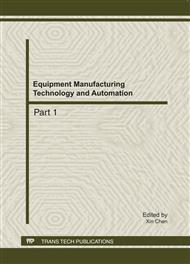p.698
p.703
p.708
p.713
p.718
p.723
p.727
p.734
p.738
The Conductivity Measurement of Polyethylene Glycol Dilaurate
Abstract:
In orlder to find out the law between conductivity of polyglycol aliphatic acid ester and concentration and polymerization degree, the relationship between conductivity of polyglycol aliphatic acid ester and concentration and polymerization degree was teated by using DDS-II conductivity experimen instrument, by taking a typical polyethylene glycol 200( 400, 600) dilaurate as the research object. Firstly, the conductivities at the water content from 10% to 90% were tested in the room temperatrure. The results showed that conductivity of the same emulsion increases with increasing the water content, then decreases with increasing the water content. This is because that the emulsion is the O/W emulsion, conductivity increases with increasing the water content. Then the liquid crystal is generated in the emulsion leading to the increase trend of conductivity slowing down. The emulsion changs into the W/O emulsion at last resulting in conductivity decreases with increasing the water content. Secondly, the relationship between conductivity of emulsion and polymerization degree were tested. The results of the experiment show that: the higher the polymerization degree, the smaller the conductivity o f the emulsion is. The reason is the higher the polymerization degree, the less the conductible ions of the emulsion is, finally cause the conductivity changs smaller and smaller.
Info:
Periodical:
Pages:
718-722
Citation:
Online since:
August 2011
Authors:
Price:
Сopyright:
© 2011 Trans Tech Publications Ltd. All Rights Reserved
Share:
Citation:


